Trees lose weight not to look good on mirrors, they lose weight to nurture and inspire generations after.
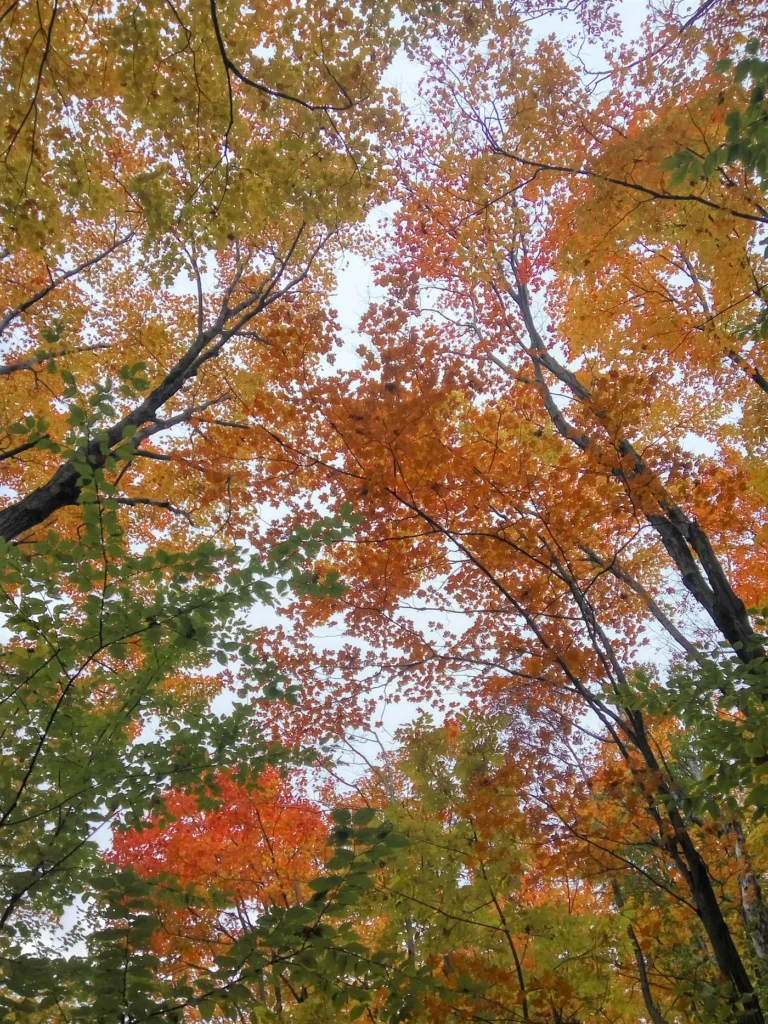
꧂
Did you know?
Eden was once evergreen
Sprinkled with umber senescence.
Then eons elapsed, habits re-drafted,
Sounding a slow but endearing trumpet…
While leaves became flat,
A tree choir has progressed - step by step
Chanting red and yellow…over verte
Perfecting as a choreographed triplet.
Have you heard their chorale?
When the Jura hears the whizz,
Birds stop chirping
Bugs stop squeaking꧂Poem by Marmotian on the last day of November
…Do you feel the chilling?
Anew comes a mottled painting
Along a hymn with poetic ending -
Revealing a dance of eternal natural laws,
That marks the secret of rise and fall.
What does a tree do when its livable world starts to fall apart?
It couldn’t run, so it must change. It changes its goal — not to grow but to let go of its ego.
This new goal doesn’t cling to the old “self”; it sheds the unnecessary and, in the meantime, builds a sanctuary.
If you didn’t know already, trees are factories producing food for the whole community. The actual production “crop fields” are the leaves; the rest of the trees are just feedstock supply chains and transport machinery.
When trees shed their leaves, are they treating the field workers unfairly?
Nein. One, they are more like solar panels than forced labor; Two, one wouldn’t want workers to work in the open field through harsh Winter anyway, it is a death sentence whether on the ground or branch. Instead, trees discard their empty extremities and save the souls in their warm, protective wooden bodies, setting the stage for them to re-birth next year. You will see what on earth I am talking about in a moment.
“Leaf senescence” is the process of “programmed leaf death” and the subsequent shedding after a brittle layer of abscission cells forms at the leaf stalk when a leaf ceases to function (photosynthesize) normally. It is an eternal process, just like humans continually shedding their old, flaky skin cells. It happens too in “evergreen” trees, just that the leaves (or needles) drop is not synchronized like in their deciduous relatives.
Why the difference? Re-birth is costly. Deciduous trees are often regarded as the fast resource-acquisitive miners in forest science; they earn fruits plenty in the summer and hence can afford to take a holiday every year — they enjoy life paycheck to paycheck (a fat one nonetheless). In contrast, evergreens, especially conifers, are gradualists and slow-builders. They earn less and spend even less, but their resistance to environmental stress is stronger. Hence, they can afford to maintain their composure all year round. Think of certain animals that put on a thick coat and fat layer for warmth and protection (needles are also covered with thick waxy cuticles), while others simply decided they have had enough and went on to sleep through the winter. It is a lifestyle choice.
Cheap carbon, precious nutrients
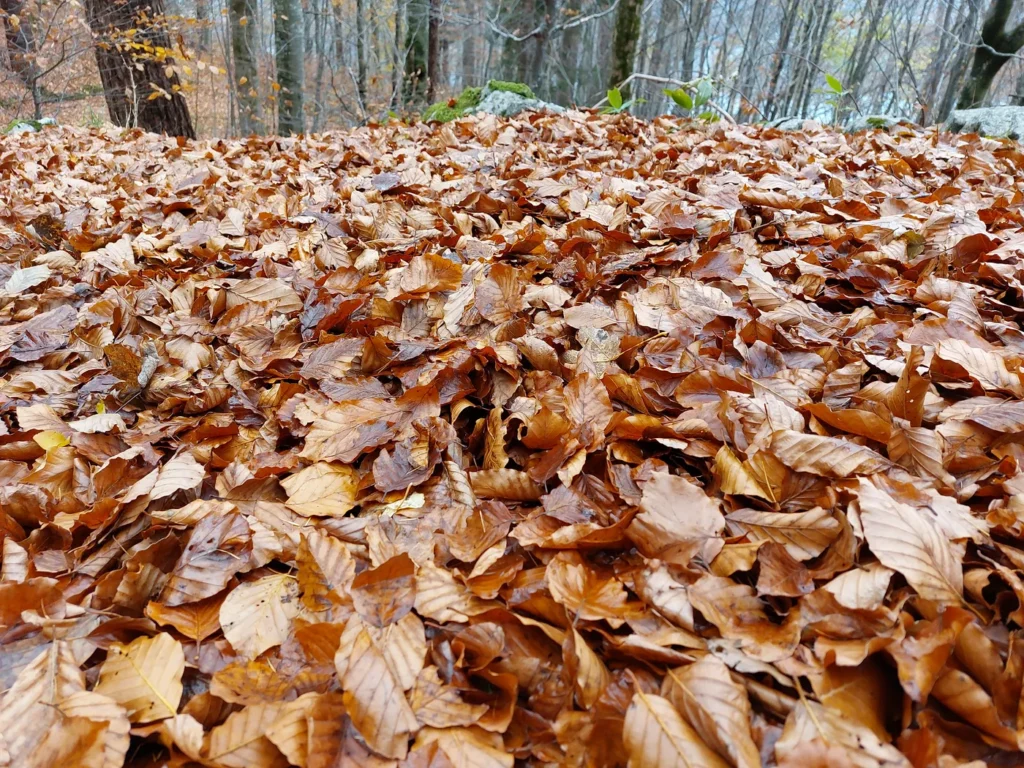
Synchronized leaf shedding is a bold choice with style, it is more than just a dramatic, physical “break-up” though. Behind the departure, there is continuity and remembrance. A key process happening under the curtain is “nutrient resorption” — crucial for re-ignition after the second Spring. The thick layer of leaves shed by autumn romantics also constitute food and sanctuary for the underworld critters, microbes and seeds. If more soil life survives through winter, more nutrients can be harvested next year.
If you didn’t know already, trees are organisms with by far the highest carbon-to-nutrient ratio (e.g., nitrogen and phosphorus) on the face of the Earth. They are carbon binge eaters; that’s how they got their thick trunks. But being big doesn’t mean being healthy and functional; they need nutrients for a balanced diet. Nutrients are for trees the grandma’s hot soup that cures all ills of grandkids.
The process “nutrient resorption” (e.g., nitrogen and phosphorus) is akin to saving essential and precious minerals like gallium, tellurium, and crystalline silicon from the cheap plastic and glass casing of solar panels at high efficiency, instead of throwing everything to landfills or electronic waste piles in Ghana. For trees, even the shedding of cheap carbon itself fuels up and “spongifies” the soil below (as opposed to cheap plastics that poison and stiffen), nourishing a thriving underground community that acts as another layer of nutrient conservation and recycling.
It has been estimated that recycled nitrogen and phosphorus (i.e., not counting new inputs from the atmosphere and rocks) amount to 90 and 98% of annual plant demand in natural land ecosystems. To put into perspective, (nutrient) recycling in croplands and solar panels is about 50% and 10%, respectively.
Trees thus make both a moral and rational decision to cherish valuable goodies — conserving and recycling things that don’t come as easy. They are in stark contrast to humans indulging in linear extraction and disposability. Guess who will have the last laugh in evolutionary continuity?
Trees, too, are afraid of the cold darkness
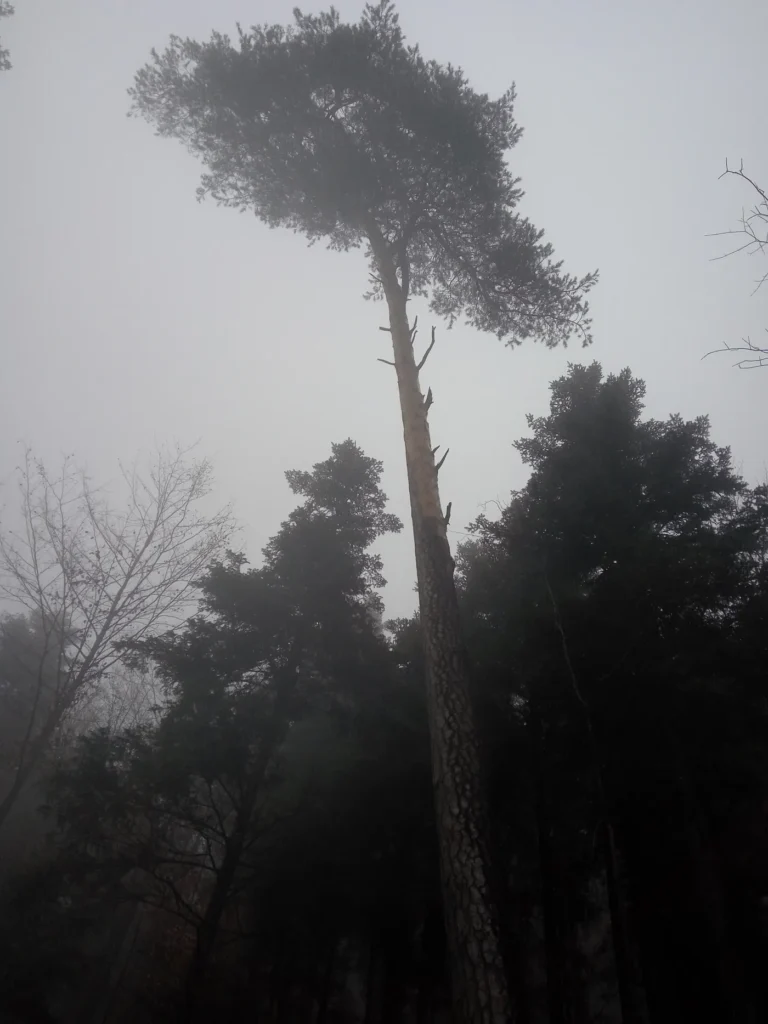
Paleontologists think that “deciduousness” evolved as an adaptation to both seasonally dry, cold climates as well as consecutive months with short daylight. It is a “no-leaf” alternative to “small-leaf” (needles) adaptation in conifers. That is, staying flat out “broad-leaved” has little merit in harsh winter conditions. One can imagine: who would go bare and sunbathe in the middle of winter?
What this also means is that trees see and foresee with their leaves. When the harsh time comes, trees acknowledge and accept the daunting reality, thereby adjusting their strategy accordingly.
“Only when we learn to embrace reality, could we prepare well for upcoming adversity.” — Marmotian
Humans can use a bit of this age-tested wisdom to become better realists. Blind pessimism ends life prematurely. If trees were pessimists, they would shut their stomata and stop growing at the slightest sign of discomfort under an otherwise moist and balmy Summer.
Blind optimism is no good either, as it merely perpetuates the status quo. If trees were optimists, they would continually up their investment in photosynthetic apparatus and root exudation even when winter approaches (while getting no/negative return); no trees nor any plants would do that in reality. Should humans continue to invest in “green-growth” technology?
By vast observations of evolutionary history, we know that specialist organisms (i.e., having only narrow ways of living) are the first to go extinct in times of environmental change. The take-home here is that when the stress and hardships are measurably and pressingly real, we better accept and adjust, instead of procrastinating endlessly. Our fighting chance dwindles whenever we let our ego overshadow our rationality, like using up more and more of the dwindling fossil energy reserves just to blow out our own candles more quickly.
They want to tell us a story
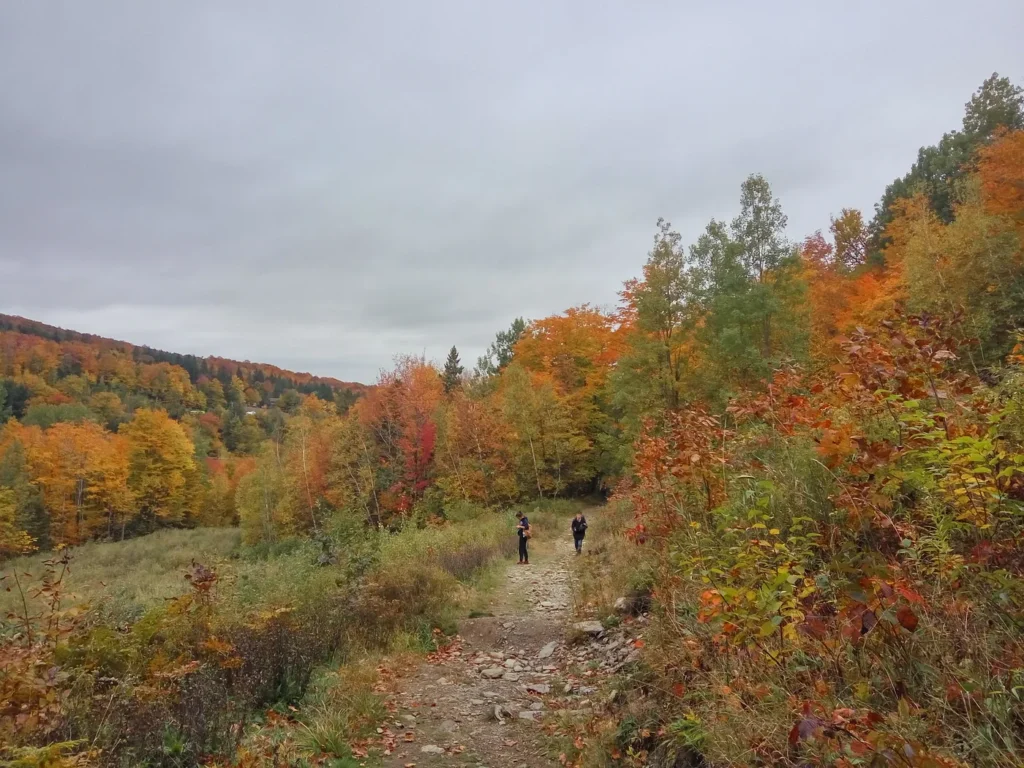
What about the Autumn colors? Do they just want to look cooler?
Of course, it is conceivable that trees can do all the aforementioned conservation and adaptation strategies without orchestrating such a dazzling, mottled display, but there is more to it than eye candy.
The symphony of autumn color is not the unintended side effect of leaf-shedding. In fact, the scarlet “Anthocyanins” as well as other UV-reflecting phenolics (visible to insects) are synthesized de novo before leaf shedding in many plants (n.b. slow-degrading carotenoids contribute to the yellow tint, dead leaves without pigments are dull brown).
Scientifically, we know that autumn colors and their associated compounds are essentially communicating with little bugs along the line of “Don’t eat me, you better go somewhere else!”. It is like re-vamping a bunch of food stores as pharmacies — no more window shopping and restaurant hopping. It is a way to tune down their appetite and greed.
By the same logic, wouldn’t trees also want to talk to us?
“Don’t cut me! You will regret it!!” Deep inside us, we all somehow have an “innate” disgust for people who chop/burn down trees needlessly (do you all feel it?). This might be learned or evolved; I don’t know the answer. But either way, we know we wouldn’t be able to enjoy this mesmerizing color show if we wield our axes recklessly.
The autumn beauty doesn’t last long, but rarity and ephemerality confer true worth and humility. Autumn is probably the only time in a year when more people prefer to go into the woods than shopping malls on the weekend. They remind us of the immeasurable value of Mother Nature and that nothing can be taken for granted. She is not here to entertain us forever.
If Eden is eternally evergreen, perhaps we, the consumers, wouldn’t be as grateful and humble as we could be. They might be reduced to a resource or noisy background easily. Through this incredible dance of evolution and striving for novel beauty, we now learn so much more about the potential and meaning of life, and every time you look at it anew, there is more to it.
Perhaps nature’s quest is an eternal search with no constancy. With that in mind, let’s welcome the frosty winter mystery.
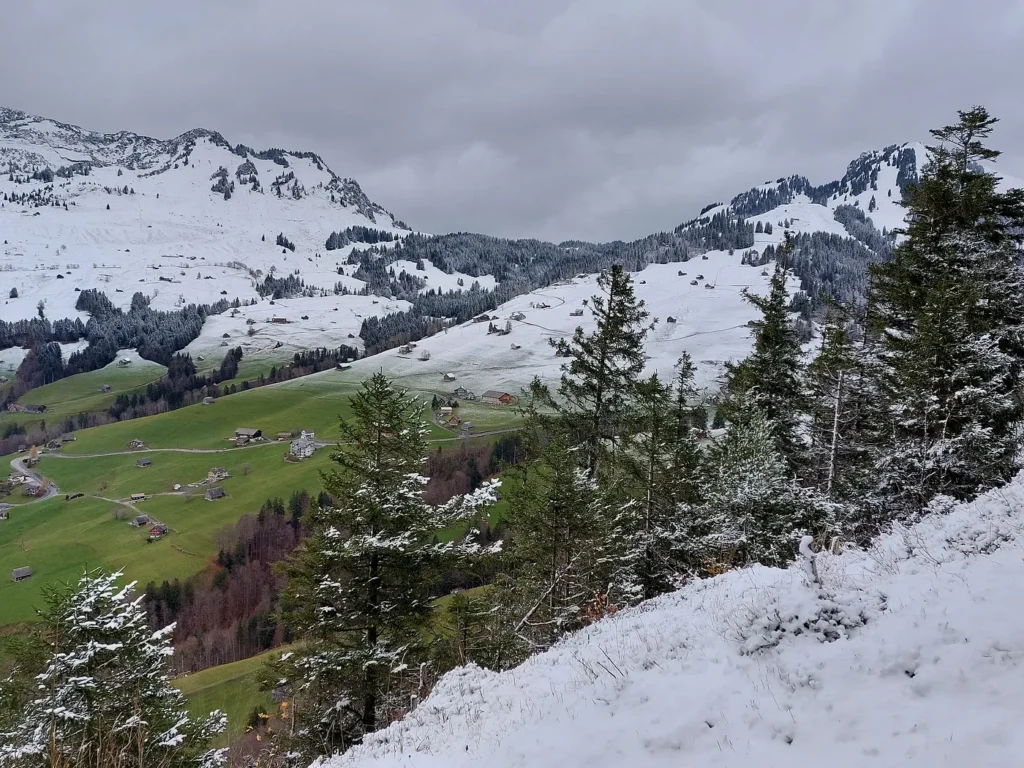
I poured out my heart and soul to write this as an ecologist. I hope you find something inspirational, something valuable in this story; I hope you come to appreciate trees more, to see that they are perhaps “more human than human”. Share this with anyone who may learn from this story. A side note, this piece was first conceived because my fellow slow-living pal Jenny Lane wanted to know more about autumn leaf senescence!

